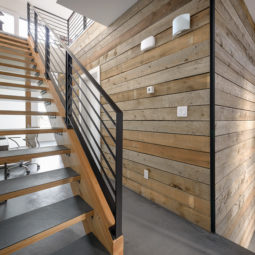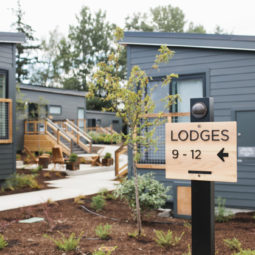
By Marc Stiles – Senior Reporter, Puget Sound Business Journal, Mar 2, 2022, 5:57pm EST
A year ago Seattle builder Sloan Ritchie listed for sale the state’s largest “passive house” development, an eight-story project in Seattle’s Central Area. He didn’t have the financial bandwidth to build the 107-unit project and continue loading up his company’s development pipeline of highly energy-efficient projects.
Sloan listed the project, his largest to date, but it came off the market when some notable players emerged — HAL Real Estate and brothers Tim and Peter Wolff — ready to finance the project, which is rising at 1419 24th Ave. The work is underway despite the Teamsters’ strike against concrete suppliers, which has essentially ground construction to a halt.
HAL has agreed to put up to around $9 million into the $26 million project by Ritchie’s Seattle company, Cascade Built.
“That’s a small investment for us,” HAL President Jonathan Manheim said. The company generally does not invest less than $10 million. “We flexed down for this specifically because of the passive house opportunity.”
The amount that the Wolff brothers, members of the family behind a national development company, was not available; they’re investing separately from the Wolff Co.
Passive houses have high-performance windows, extra-thick walls and energy recovery ventilation system. Passive house buildings consume up to 90% less heating and cooling and energy than traditionally built buildings.
Until now Cascade Built has relied on financing from friends and family, people who are familiar with the work of Ritchie, a U.S. passive house pioneer who over the last nine years has built six such projects totaling 162 units. Ritchie said that working with HAL and the Wolffs takes the company to the next level.
“For them to say, you know, this looks like it’s really something worth doing … and then to eventually say, ‘Yes, we’re on board,'” is gratifying, Ritchie said.
The built environment is responsible for roughly 40% of humanity’s carbon emissions, and the world is at a tipping point with the latest United Nations’ assessment underscoring many of the impacts of global warming are irreversible. But, the new report said loss of life and property can be reduced if the rise in temperatures is kept below 1.5 degrees centigrade.
Manheim said he has had conversations internally at his company and with its board, and the consensus has been that when opportunities “meaningfully move the needle” in the construction industry on how buildings can be operated more efficiently “those are opportunities that we need to be taking.”
More and more developers interested in passive house construction are reaching out to Ritchie, who said he used to get a call or two a year. In the past six months he has met with six developers from across the country.
Cascade Built is working around the Teamsters strike by mixing concrete itself for piles. “It’s very inefficient for the size of project it is, but it was a way for us to continue moving forward,” Ritchie said.
B9 Architects designed the 24th Avenue project with support from Quantum Consulting Engineers, Root of Design, Staengl Engineering, RDH and Evergreen Certified. The project is scheduled for completion in the summer of 2023.
Next Story: Multifamily project marks milestone for passive house development



